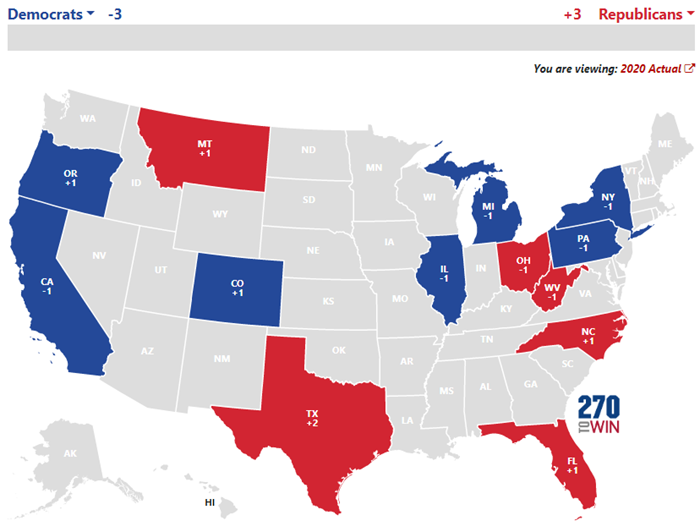Editors Note: Below is a reprint of the Census Bureau's official report.
APRIL 26, 2021 – The U.S. Census Bureau announced today that the 2020 Census shows the resident population of the United States on April 1, 2020, was 331,449,281.
The U.S. resident population represents the total number of people living in the 50 states and the District of Columbia. The resident population increased by 22,703,743 or 7.4% from 308,745,538 in 2010.
“The American public deserves a big thank you for its overwhelming response to the 2020 Census,” Secretary of Commerce Gina Raimondo said. “Despite many challenges, our nation completed a census for the 24th time. This act is fundamental to our democracy and a declaration of our growth and resilience. I also want to thank the team at the U.S. Census Bureau, who overcame unprecedented challenges to collect and produce high-quality data that will inform decision-making for years to come.”
“We are proud to release these first results from the 2020 Census today. These results reflect the tireless commitment from the entire Census Bureau team to produce the highest-quality statistics that will continue to shape the future of our country,” acting Census Bureau Director Ron Jarmin said. “And in a first for the Census Bureau, we are releasing data quality metrics on the same day we’re making the resident population counts available to the public. We are confident that today’s 2020 Census results meet our high data quality standards.”
The new resident population statistics for the United States, each of the 50 states, the District of Columbia and Puerto Rico are available on census.gov.
- The most populous state was California (39,538,223); the least populous was Wyoming (576,851).
- The state that gained the most numerically since the 2010 Census was Texas (up 3,999,944 to 29,145,505).
- The fastest-growing state since the 2010 Census was Utah (up 18.4% to 3,271,616).
- Puerto Rico's resident population was 3,285,874, down 11.8% from 3,725,789 in the 2010 Census.
In addition to these newly released statistics, today Secretary Raimondo delivered to President Biden the population counts to be used for apportioning the seats in the U.S. House of Representatives. In accordance with Title 2 of the U.S. Code, a congressionally defined formula is applied to the apportionment population to distribute the 435 seats in the U.S. House of Representatives among the states.
The apportionment population consists of the resident population of the 50 states, plus the overseas military and federal civilian employees and their dependents living with them overseas who could be allocated to a home state. The populations of the District of Columbia and Puerto Rico are excluded from the apportionment population because they do not have voting seats in Congress. The counts of overseas federal employees (and their dependents) are used for apportionment purposes only.
- After the 1790 Census, each member of the House represented about 34,000 residents. Since then, the House has more than quadrupled in size (from 105 to 435 seats), and each member will represent an average of 761,169 people based on the 2020 Census.
- Texas will gain two seats in the House of Representatives, five states will gain one seat each (Colorado, Florida, Montana, North Carolina, and Oregon), seven states will lose one seat each (California, Illinois, Michigan, New York, Ohio, Pennsylvania, and West Virginia), and the remaining states’ number of seats will not change based on the 2020 Census.
Upon receipt of the apportionment counts, the president will transmit them to the 117th Congress. The reapportioned Congress will be the 118th, which convenes in January 2023.
“Our work doesn’t stop here,” added acting Director Jarmin. “Now that the apportionment counts are delivered, we will begin the additional activities needed to create and deliver the redistricting data that were previously delayed due to COVID-19.”
Redistricting data include the local area counts states need to redraw or “redistrict” legislative boundaries. Due to modifications to processing activities, COVID-19 data collections delays, and the Census Bureau’s obligation to provide high-quality data, states are expected to receive redistricting data by August 16, and the full redistricting data with toolkits for ease of use will be delivered by September 30. The Census Bureau will notify the public prior to releasing the data.
HELP STOP THE SPREAD OF FAKE NEWS!
SHARE our articles and like our Facebook page and follow us on Twitter!





0 Comments